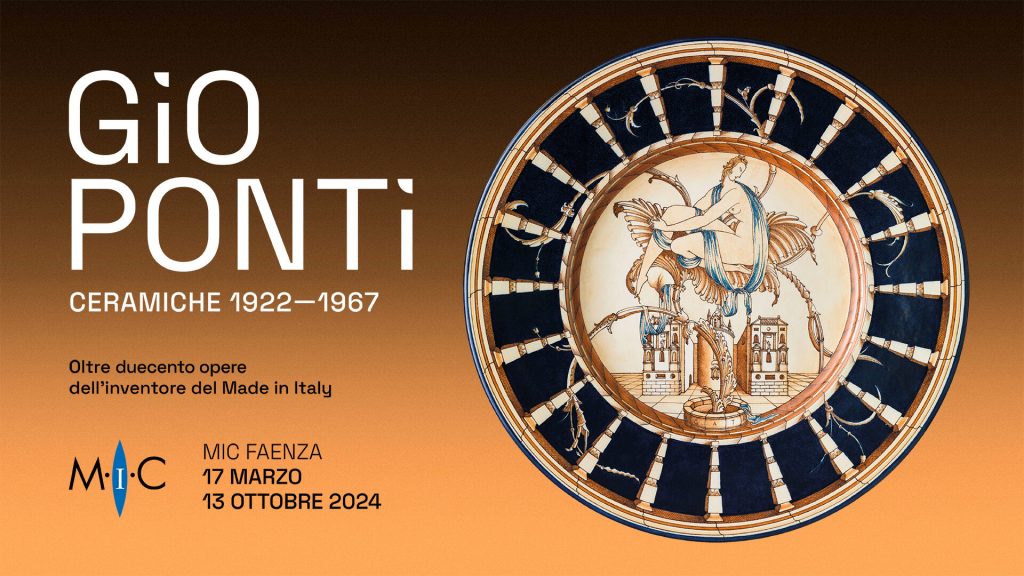MIC Faenza to Open Gio Ponti Exhibition

Gio Ponti was one of the greatest popularizers of Made in Italy as early as the 1920s, when he became artistic director of Richard Ginori, initiating a renewal of production. To the figure of architect, designer and intellectual, who was a reference for the establishment of an Italian “style” of decorative arts, is dedicated the exhibition at MIC Faenza (March 17-Oct. 13) “Gio Ponti. Ceramics 1922-1967” curated by Stefania Cretella.
The MIC International Museum of Ceramics in Faenza continues its program of highlighting the personalities and great manufacturers who have built ceramic Made in Italy. After Lenci and Chini, it is now the turn of Ponti.
In addition to Richard Ginori during his long career, Ponti came into contact with several Italian ceramic realities: the Cooperativa Ceramiche di Imola, Pietro Melandri and the Faentine context (the cartepeste made with the Dalmonte family were famous), with Ceramiche Pozzi, Joo and Gabbianelli, to mention the main companies with which he promoted unique and extraordinarily current paths and projects. His connections saw him at the center of the Italian cultural debate and the definition of Italian rationalism. He collaborated with critics Ugo Ojetti, Edoardo Persico, worked together with Luigi Fontana and Giovanni Gariboldi, his successor at Richard Ginori.
Ponti was, moreover, one of the protagonists of the Monza Biennials, presenting in the halls of the Villa Reale the innovations he introduced in the Richard-Ginori repertoire and the results of the experiments he shared with the other architects of the côté Milanese involved in the experiences of the Labyrinth and of the Domus Nova for department stores La Rinascente Milan.
Relationships with the world of exhibitions were a constant in his career by actively participating with his projects and as a member of organizing committees. He collaborated with the Milan Triennials and was featured in events such as Italy at Work. Her Renaissance in Design Today, a traveling exhibition that took place in the United States between 1950 and 1951, and Italia ’61, an event organized in Turin to celebrate the first centenary of the Unification of Italy.
He founded two magazines which were very important for design and high art craft as Domus and Style, which clearly contributed to the promotion of the arts intended for home furnishings and the spread of modern language, ideas that were crowned by the design and construction from 1956-60 of the Pirelli Skyscraper in Milan, a masterpiece of Italian rationalism that became an absolute symbol of “modernity” in postwar Italy.
The catalog is edited by Claudia Casali and Stefania Cretella – Dario Cimorelli Editore.
The exhibition benefits from the fundamental partnership of the Fondazione Museo Archivio Richard Ginori della Manifattura di Doccia in Sesto Fiorentino and the Archivio Gio Ponti.
With the support: General Directorate, education, research and cultural institutes, Emilia Romagna Region, Fondazione Cassa di Risparmio di Ravenna, Municipality of Faenza, Union of Faenza Romagna, Caviro, Romagna Acque, Hera, Tagina, Cerdomus, Sacmi, Tema Sinergie.
For more news of interest to the home decor industry, subscribe to Kitchenware News & Housewares Review.

You must be logged in to post a comment.